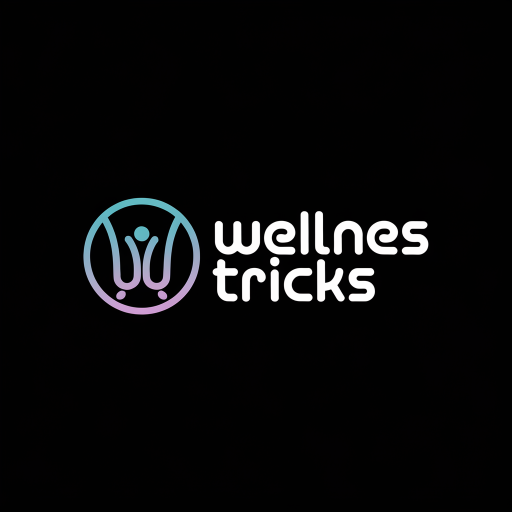The Breathing Method That Calms My Nervous System Fast
When stress hits, finding quick relief is essential. Have you ever tried the 4-4-6 breathing method? It’s a simple yet effective technique that can help calm your nervous system in just 60 seconds. By understanding how this method works, you can tap into its numerous benefits. Ready to discover how this breathing technique can transform your daily routine? Let’s explore the steps and advantages together.
Key Takeaways
- Controlled breathing activates the parasympathetic nervous system, promoting rapid relaxation and calming effects on your body.
- Inhale deeply through your nose, hold for four counts, and exhale slowly through your mouth for six counts.
- Rhythmic breathing reduces anxiety and tension, helping to shift focus away from stressors effectively.
- Practicing this method for just 60 seconds can provide immediate anxiety relief and restore equilibrium.
- Incorporate reminders for mindful breathing throughout your day to enhance emotional resilience and overall well-being.
Understanding the Nervous System
The nervous system plays a crucial role in how you respond to stress and maintain balance in your body. It consists of two main parts: the central nervous system and the peripheral nervous system.
When you face stress, your body activates the sympathetic nervous system, triggering a fight-or-flight response. This can leave you feeling overwhelmed.
However, calming breathwork can help shift your focus. By engaging in deep, intentional breathing, you activate the parasympathetic nervous system, promoting relaxation and restoring equilibrium. This practice of calming breathwork can significantly enhance your overall well-being and resilience in the face of stress.
Incorporating these techniques into your daily routine can empower you to manage stress more effectively and maintain overall well-being.
The Science Behind Breathing Techniques
Breathing techniques leverage the body’s physiological responses to enhance mental and emotional well-being.
When you focus on your breath, you activate the parasympathetic nervous system, promoting relaxation and reducing stress.
This shift helps lower heart rate and blood pressure, creating a sense of calm.
Deep, rhythmic breathing increases oxygen flow to the brain, improving clarity and focus.
Additionally, it regulates cortisol levels, the stress hormone, helping you feel more grounded.
Moreover, practicing deep breathing regularly can significantly improve overall mental health, serving as a powerful tool for emotional regulation.
The Breathing Method Explained
Understanding how to effectively harness your breath can significantly impact your ability to manage stress.
This breathing method focuses on controlled inhalation and exhalation to activate your body’s relaxation response.
By slowing your breath, you signal your nervous system to calm down, reducing anxiety and tension.
You’re essentially creating a rhythm that shifts your focus away from stressors.
This practice can be done anywhere and at any time, making it a versatile tool in your wellness arsenal. Additionally, this quick breathing technique can provide anxiety relief in just 60 seconds, helping you regain focus and peace in stressful moments.
Step-by-Step Guide to Practicing the Method
To effectively practice the calming breathing method, start by finding a comfortable position, whether seated or lying down.
Close your eyes and take a deep breath in through your nose, filling your lungs completely. Hold that breath for a count of four, then slowly exhale through your mouth for a count of six.
Repeat this cycle for several minutes, focusing on the rhythm of your breath. If your mind wanders, gently bring your attention back to your breathing.
Incorporating simple breathing exercises into your routine can enhance mental clarity and clear mental fog.
After a few rounds, notice how your body feels more relaxed and your mind clearer. This simple practice can be a powerful tool.
Benefits of Calming Your Nervous System
Calming your nervous system offers numerous benefits that can significantly enhance your overall well-being.
When you take the time to relax your mind and body, you’ll likely experience reduced anxiety and stress levels. This can lead to improved focus and productivity, allowing you to tackle daily tasks with greater ease.
Additionally, calming your nervous system fosters emotional resilience, helping you respond to challenges more effectively. Better sleep quality often follows, as your body and mind can unwind. Incorporating visualization techniques into your routine can further amplify these positive effects.
Ultimately, by prioritizing your nervous system’s health, you pave the way for a more balanced, joyful life. You deserve this peace.
Tips for Incorporating Breathing Into Daily Life
Incorporating breathing exercises into your daily routine can make a significant difference in how you manage stress. Setting mindful breathing reminders throughout the day helps keep your focus and calmness at the forefront. Start small, and you’ll soon notice the benefits of intentional breathing in your life. Practicing proper breathing techniques can also enhance your concentration and mental clarity, allowing you to be more productive.
Daily Breathing Exercises
Breathing exercises can easily fit into your daily routine, making it simpler to manage stress and promote relaxation.
You can start by dedicating just five minutes each morning to deep breathing. When you’re stuck in traffic or waiting in line, practice counting your breaths—inhale for four counts, hold for four, and exhale for four. Before meals, take a moment to breathe deeply, fostering mindfulness and gratitude. Incorporate these exercises during breaks at work or while winding down in the evening.
With consistency, you’ll notice increased calmness and clarity, helping you tackle daily challenges with ease.
Mindful Breathing Reminders
How can you seamlessly weave mindful breathing into your everyday activities?
Start by setting reminders on your phone to take a few deep breaths throughout the day.
Whether you’re waiting in line or sitting at your desk, pause and inhale deeply, then exhale slowly.
You can also associate mindful breathing with routine tasks—breathe while brushing your teeth or during your morning coffee.
Create a calming environment by designating a spot for short breathing sessions.
Finally, during stressful moments, simply close your eyes, focus on your breath, and let the tension melt away.
Consistency makes mindful breathing a natural part of your life.
Personal Experiences and Testimonials
Have you ever wondered how a simple breathing technique can transform your daily life? Many people, just like you, have discovered the profound impact of mindful breathing on their nervous systems. Here’s a glimpse into their experiences:
| Name | Experience | Outcome |
|---|---|---|
| Sarah | Anxiety before presentations | Reduced panic |
| John | Stressful workdays | Improved focus |
| Emma | Daily overwhelm | Enhanced calmness |
| David | Pre-sleep restlessness | Better sleep |
| Mia | Social anxiety | Increased confidence |
These personal stories highlight the effectiveness of this breathing method in everyday situations.

